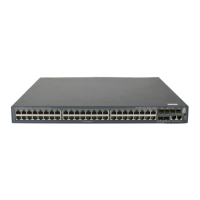81
the authentication server does not support the multicast address, you must use an 802.1X client, the HP
iNode 802.1X client for example, that can send broadcast EAPOL-Start packets.
Access device as the initiator
The access device initiates authentication, if a client, the 802.1X client available with Windows XP for
example, cannot send EAPOL-Start packets.
The access device supports the following modes:
• Multicast trigger mode—The access device multicasts Identity EAP-Request packets periodically
(every 30 seconds by default) to initiate 802.1X authentication.
• Unicast trigger mode—Upon receiving a frame with the source MAC address not in the MAC
address table, the access device sends an Identity EAP-Request packet out of the receiving port to
the unknown MAC address. It retransmits the packet if no response has been received within a
certain time interval.
802.1X authentication procedures
802.1X authentication has two approaches: EAP relay and EAP termination. You choose either mode
depending on the support of the RADIUS server for EAP packets and EAP authentication methods.
EAP relay is defined in IEEE 802.1X. In this mode, the network device uses EAPoR packets to send
authentication information to the RADIUS server, as shown in Figure 40.
Figure 40 EAP relay
In EAP termination mode, the network access device terminates the EAP packets received from the client,
encapsulates the client authentication information in standard RADIUS packets, and uses (Password
Authentication Protocol) PAP or (Password Authentication Protocol) CHAP to authenticate to the RADIUS
server, as shown in Figure 41.
Figure 41 EAP termination

